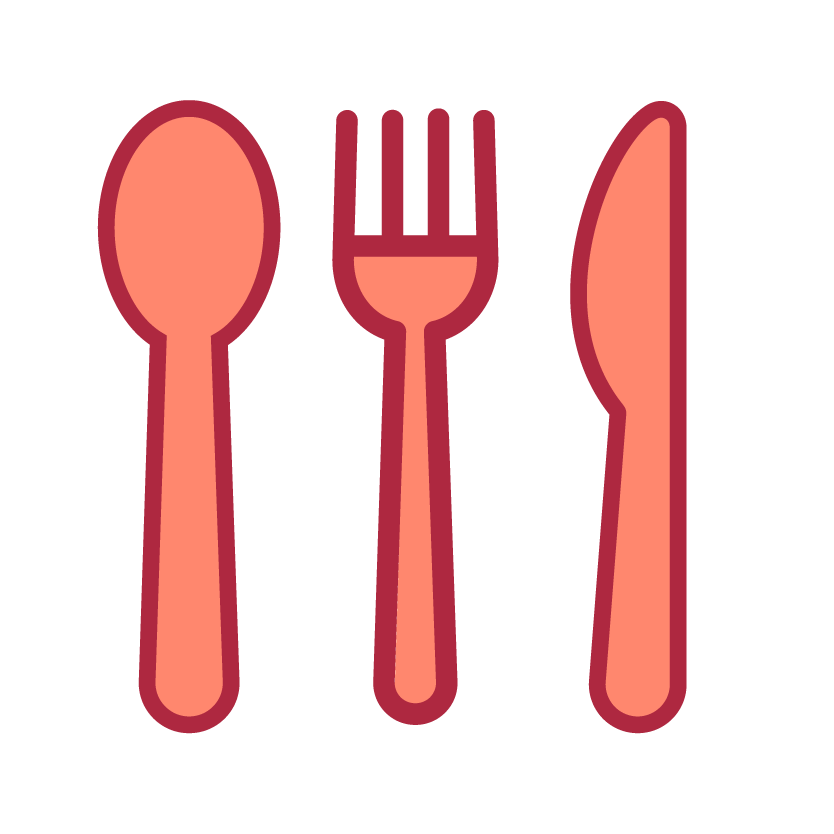The Start Here Toolkit
More than enough food is produced to feed every person, yet one-third of all food is wasted. Redirecting safe, surplus food is an effective and compassionate solution, but it can be complicated because food is a heavily regulated product.
This Policy Starter Kit is a concise review of the most effective policy from around the world.
Our Key Findings and
Recommendations in One Place
The Start Here Toolkit was designed to provide a brief overview of our research from around the world that can improve policy to reduce food loss and waste and increase food donation. Click on the policy area you’d like to explore or scroll through all our policies below. Follow hyperlinks for our full reports on each policy and Country Reports. Content is also available in the PDF report below.
Download a PDF ReportFood Safety

Overview
Unclear or restrictive food safety laws often deter donations, as donors may fear penalties or lack guidance on safe handling. This leads to wholesome food being discarded.
Clear and comprehensive food safety policies specifically tailored to donated food are critical to ensure donors understand how to legally donate and beneficiaries are protected.
Policy Recommendations
- Incorporate food donation into food safety legislation.
- Explicitly permit the donation of unsaleable food with minor labeling flaws or permitting issues.
- Issue government guidance and public education initiatives.
Best Practices
United Kingdom (UK): The UK updated its food safety law to establish a detailed legal framework relevant to food donation.
India: The Food Safety and Standards Authority of India enacted the Food Safety and Standards Regulations, which outlines clear food safety protocols for donations and expressly permits food donation.
Argentina: Argentina has a regulation that explicitly permits the donation of food that has been seized by the government for non-safety-related reasons.
Singapore: Singapore’s National Environment Agency (now the Singapore Food Agency) issued Guidelines on Food Donation in 2016 to clarify food safety standards for the procurement, processing, and distribution of donated food that apply to all nongovernmental organizations, food and beverage retail establishments, and food manufacturers.
Brazil: The food safety agency (Agência Nacional de Vigilância Sanitária, or ANVISA) released a Guide for Food Donation with Sanitary Safety on November 7, 2022. The guide explains best practices for procedures, routines, and methods to maintain the safety of donated food.
Liability Protection

Overview
A primary concern deterring businesses from donating surplus food is the fear of liability should a recipient fall ill after consuming donated items even if the food is safe and was handled in accordance with safety requirements.
This liability risk leads many potential donors to discard safe, nourishing food rather than redistribute it to people facing hunger. Liability protection laws are therefore crucial as they shield food donors and food recovery organizations from liability when donations are made in good faith and without negligence or intentional misconduct.
Policy Recommendations
- Provide comprehensive liability protection for food donors and recovery organizations.
- Designate an agency to raise awareness and provide guidance.
- Extend liability protection to intermediaries charging a nominal fee.
- Allow liability protection for direct donations to individuals.
- Clarify food safety requirements relevant to liability protection.
Best Practices
Argentina: The Food Donation Law (Régimen Especial para la Donación de Alimentos) in Argentina provides robust liability protection to food donors and recovery organizations.
United States: The Bill Emerson Good Samaritan Food Donation Act provides comprehensive liability protection to food donors and nonprofit organizations, ensuring they are not held responsible for any issues arising from donated food if they act in good faith.
Singapore: Singapore enacted the Good Samaritan Food Donation Act to encourage food donation by providing liability protections to donors and food distribution organizations,35 as long as they comply with specified food safety and handling standards, including the use of appropriate storage, labeling, and transportation practices.
Date Labeling

Overview
Confusion over date labeling is a leading contributor to food loss and waste worldwide. Misinterpretation of date labels, such as “sell by,” “best before,” or “use by,” often results in safe, nutritious food being discarded unnecessarily by consumers and potential food donors. Manufacturers generally use date labels to indicate what they consider the time for peak food quality of their product, as opposed to the safety of the food.
The Codex Alimentarius, a set of international food standards developed by the Food and Agriculture Organization of the United Nations (FAO) and the World Health Organization (WHO), recommends a dual labeling scheme that distinguishes between dates used to indicate safety and those used to indicate peak quality. Specifically, it recommends using only one label, either a “use by date” or “expiration date” to indicate safety or a “best before date” or “best quality before date” to indicate quality.
Policy Recommendations
- Standardize to a dual date labeling scheme.
- Expressly permit the sale and donation of food past quality-based date labels.
- Educate consumers and businesses.
Best Practices
United Kingdom: The UK’s date labeling scheme follows the EU’s dual labeling approach, specifying “use by” for safety-related dates on highly perishable items and “best before” for quality-based indicators on other foods. In addition, extensive guidance and public education initiatives in the UK help clarify these distinctions and have helped reduce food waste significantly.
Israel: In Israel, the dual date labeling system under the Law for the Protection of Public Health (Food) clearly distinguishes between safety-related and quality-related dates on food products, helping clarify which foods remain safe to consume past certain dates.47 Israel’s system uses two terms: “use by”, a safety-based date applied to perishable items that could pose health risks if consumed past this date and “best before”, an indicator of highest quality.
European Union: Within the EU, Regulation No. 1169/2011 on Food Information to Consumers governs the use of date labels on food products. For the majority of packaged food products, the regulation requires either a date mark specifying a “use by” date—indicating safety—or a “date of minimum durability” (or “best before” date)—indicating quality.
Tax Policy

Overview
Tax policies are powerful tools that can either encourage or discourage food donation, shaping how surplus food is managed across the supply chain. By strategically implementing tax benefits or reducing financial barriers, governments can significantly impact the volume of food recovered and redistributed to people facing hunger.
In countries with robust tax incentives, food donation is a cost-effective alternative to discarding surplus food. Incentives often include tax deductions, credits, or exemptions that reduce the financial burden on businesses, making donation a financially attractive option.
Conversely, the absence of adequate tax incentives or the imposition of tax burdens can significantly hinder food donation efforts. In many regions, the lack of clear tax benefits or the presence of taxes such as value-added tax (VAT) on donated goods create financial disincentives that discourage businesses from donating surplus food.
Policy Recommendations
- Include charitable tax credits or deductions for in-kind food donations.
Provide a VAT exemption or zero rating for food donations. - Expand tax incentives to include associated costs of donation.
- Offer enhanced benefits for healthier food donations.
Best Practices
Colombia: In 2024 Colombia enacted Ley 2380 de 2024, a law designed to promote food donation and contribute to food security as part of the country’s “Zero Hunger” objective. This law allows donors to claim a tax credit of up to 37% (raised from the previous 25%) of the value of donated food items and hygiene products. This discount can also include transportation and related costs incurred in delivering the donated items to food banks.
United States: US taxpayers are eligible to claim both a general tax deduction of the basis value of the foods or other items for all in-kind charitable contributions (capped at 10% of income for most corporate donors) or an “enhanced tax deduction” unique to food donations (capped at 15% of income for most corporate donors).
Chile: Chile has implemented a tax law that does not permit taxpayers to claim the usual deduction for the cost of voluntarily discarded food products that are unmarketable but still suitable for human consumption. To further deter discarding food, Chile imposes a 40% tax penalty on the voluntary disposal of safe food. These laws reinforce food donation as an economical alternative to throwing away food and penalize unnecessary waste of surplus food.
Food Waste Deterrence

Overview
Food waste deterrence is a universe of laws or policies that aims to reduce food waste and increase food recovery by making food waste financially burdensome for food waste generators (e.g., businesses, institutions, households, and other entities that create food waste). These laws include various policy designs, such as restricting food waste sent to landfills, requiring food donation or diversion, and financially penalizing those entities that waste food. These policies are increasingly recognized as essential tools in combating FLW globally.
Policy Recommendations
- Adopt a national food waste deterrence law or policy.
- Experiment with financial penalties for wasteful practices.
- Provide support for state and local governments to enact food waste deterrence polices where a national law is not possible.
Best Practices
Ecuador: Ecuador’s Law to Prevent and Reduce Food Loss and Waste enforces a strict hierarchy for food disposal, penalizing those that discard food fit for consumption without exploring other uses. This law applies to the entire supply chain, from producers to retailers, mandating that food waste is minimized through prevention, donation, or recycling.
Peru: Peru’s Food Donation Law mandates the donation of commercially unviable but safe food, focusing on supermarkets and warehouses. At the time of the law’s adoption, it promoted but did not require the donation of food that had lost commercial value but was still safe and nutritious to qualifying institutions. However, as the law stipulates, the voluntary suggestion became a donation requirement starting the third year after enactment. This requirement applies only to supermarkets and food storage facilities or warehouses; other supply chain actors are still only encouraged to donate.
China: China’s Anti-Food Waste Law focuses on reducing waste in the catering sector, imposing fines on businesses that encourage wasteful behavior.81 The law mandates that restaurants must monitor food waste and prohibits media content that promotes excessive consumption, thereby addressing waste among both consumers and businesses.
France: France’s n°2016-138 Law on Fighting against Food Waste similarly obliges supermarkets more than 400 cubic meters to establish contracts with relevant charitable organizations to donate retailer food surplus. The donation requirement was extended in 2019 to institutional feeding/mass catering entities (those preparing more than 3,000 meals a day) and the food industry (whose annual turnover exceeds €50 million), and the penalty was increased.
National FLW & Food Donation Strategies

Overview
National strategies play a critical role in addressing FLW by establishing structured frameworks that coordinate government, industry, and public efforts toward comprehensive food waste reduction and surplus redistribution. While many countries have set targets under the United Nations’ Sustainable Development Goal 12.3 to halve per capita FLW by 2030,87 only a select number have implemented comprehensive national strategies specifically targeting FLW. These strategies are essential for harmonizing food waste and donation policies, often integrating goals for waste reduction with hunger alleviation and climate change mitigation initiatives.
Policy Recommendations
- Set a national goal for FLW reduction and redistribution.
- Designate a lead ministry or establish an interagency task force
- Develop a comprehensive FLW strategy.
- Educate individuals, industries, and institutions through a public education campaign.
- Involve state and local governments in the overall strategy.
Best Practices
Australia: Australia’s National Food Waste Strategy, developed with substantial stakeholder engagement and feasibility analysis, exemplifies a robust, whole-of-government approach. The strategy sets clear reduction goals supported by feasibility studies identifying the most cost-effective interventions. Australia’s public awareness initiatives, roadmap, stakeholder consultations, and voluntary agreements serve as a benchmark for FLW policy development globally.
Argentina: Argentina’s National Plan for the Reduction of Food Loss and Waste targets FLW across the food value chain. This plan includes the development of better technology, infrastructure for storage and transportation, and market mechanisms for timely distribution. Multistakeholder engagement has been critical in Argentina, with involvement from multiple sectors including agribusiness, government agencies, and retail.
Germany: Germany’s national strategy focuses on coordinated action among federal, state, and local governments and involves various stakeholders. It emphasizes consumer education, eco-platforms to facilitate food donations, and partnerships with businesses to improve resource efficiency. The strategy also includes research and innovation efforts to develop sustainable practices for reducing, reusing, and recycling food waste.
Chile: Chile’s National Organic Waste Strategy, launched in 2021, aims to significantly increase organic waste recovery. The strategy outlines a long-term approach, setting ambitious goals for municipal organic waste recovery and emphasizing public engagement, waste reduction incentives, and infrastructure improvements. Chile’s model has inspired neighboring countries, demonstrating the potential of FLW strategies to impact policy regionally.
Grants and Incentives

Overview
Government grants and other incentives can play a critical role in encouraging food donation and building infrastructure to reduce FLW. While food donation is a cost-effective solution to both hunger and FLW, it often requires infrastructure, labor, and transportation, which can be financially burdensome. Many countries lack adequate funding mechanisms to support these efforts, leaving food recovery organizations and donors without the means to scale their impact. Grants can bridge this gap, offering financial and logistical support to donors, food banks, and recovery organizations. Incentives can also promote innovation in food recovery, enhance public awareness, and incentivize businesses to donate rather than discard surplus food.
Policy Recommendations
- Establish grant funds for food recovery organizations.
- Promote nontax incentives in addition to tax incentives, or where tax incentives are insufficient or unavailable.
- Leverage public-private partnerships.
- Support education and outreach.
Best Practices
United States: The United States offers several grant programs to support food recovery, including the Emergency Food Assistance Program (TEFAP), which allocates funding for infrastructure and food purchases. The 2018 Farm Bill allocates $4 million annually from TEFAP to states to operate Farm to Food Bank projects. These projects increase the amount of fresh produce in food banks by supporting payments made to farmers for the labor involved in harvesting and preparing their surplus food for donation. States such as Massachusetts have implemented initiatives like the Massachusetts Emergency Food Assistance Program (MEFAP), which provides $30 million annually to purchase and distribute food through regional food banks.
Canada: Canada’s Local Food Infrastructure Fund is a multiyear program offering CAD $62.9 million in grants. It supports food recovery organizations in acquiring infrastructure, such as cold storage and transport equipment, and promotes community-based food systems to reduce food insecurity sustainably.
United Kingdom: The UK leverages grant funding through programs like Innovate UK to support technology-driven solutions for FLW. Initiatives like BakePlan, an AI-powered demand-forecasting tool for supermarkets, showcase how targeted grants can enhance efficiency and reduce food waste in retail. BakePlan received £43,600 in funding.
Ecuador: Ecuador’s 2022 food waste law incentivizes donors through recognition programs, access to exclusive marketing opportunities, and training in sustainable agriculture—a strong example of nonmonetary incentives. Once the law is implemented, donors that comply with the law and donate food will be granted access to a centralized marketing campaign that recognizes them as donors; exclusive fairs to promote their products; and training programs on sustainable agriculture, healthy eating, and agricultural supply chain activities (e.g., production, distribution). Even those donors that provide infrastructure or logistical assistance would be eligible for incentives. These incentives aim to embed food donation into broader sustainability efforts while promoting food security.
Emissions, Environmental, and Food Waste Reporting

Overview
Food waste is a major contributor to global greenhouse gas emissions, yet most countries lack consistent policies to measure or report its environmental impacts. Although FLW contributes significantly to climate change, many businesses and governments do not track it or account for its climate impacts—and few integrate food donation into climate mitigation strategies.
Emissions, environmental, and food waste reporting policies can help address this gap. Three primary types of reporting frameworks can be used to assess and manage FLW: (1) environmental, social, and governance (ESG) reporting, which requires companies to disclose their sustainability and social impact performance; (2) Scope 3 emissions reporting, which covers indirect supply chain emissions including those from wasted food; and (3) FLW-specific reporting, which focuses directly on measuring and disclosing food loss and waste by weight or other metrics.
Such types of reporting not only illuminate the amount and cause of waste streams but also create opportunities to reduce FLW and increase food recovery. While such reporting is often done voluntary by businesses or as part of voluntary reporting agreement, it can also be required or supported through policy.
Policy Recommendations
- Require companies to report on emissions or food waste.
- Incentivize reporting even when not mandated.
- Adopt or endorse a reporting standard.
- Support data sharing and technical assistance.
Best Practices
Mexico: Mexico’s 2012 General Law on Climate Change established a national emissions reporting platform requiring companies to calculate and report greenhouse gas emissions, including methane. Since 2017, verification by a third party has been mandatory every three years. While originally focused on the energy sector, the law creates an opportunity for companies to improve emissions performance by reducing methane from food waste, including through food donation.
European Union: The EU’s Corporate Sustainability Reporting Directive (CSRD), adopted in 2022, requires large companies and listed SMEs to disclose standardized sustainability information, including environmental impacts and resource use. The accompanying European Sustainability Reporting Standards (ESRS) explicitly integrate circular economy and waste management, which cover food waste. The EU’s 2018 revision to the Waste Framework Directive requires Member States to measure and report food waste across the entire supply chain—from production to households—using a common methodology adopted in 2019.
United Kingdom: The UK’s Waste and Resources Action Programme (WRAP) leads the Courtauld Commitment, a voluntary agreement that engages food businesses to measure, report, and reduce food waste. WRAP provides standardized tools for FLW measurement, allowing for benchmarking and cross-sector transparency. While voluntary, this framework has helped drive widespread adoption of food waste tracking and supports food donation as a key reduction strategy.







